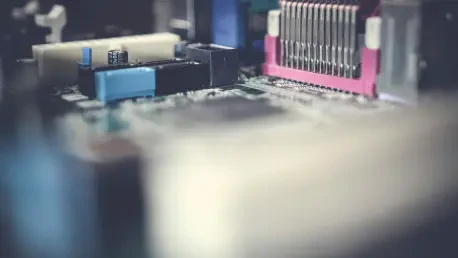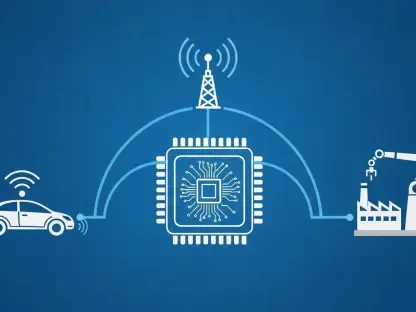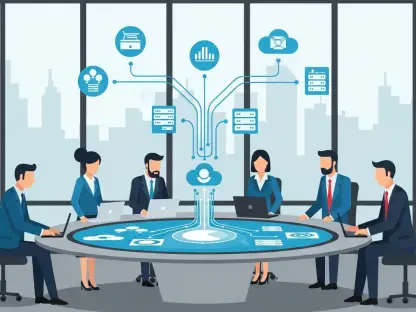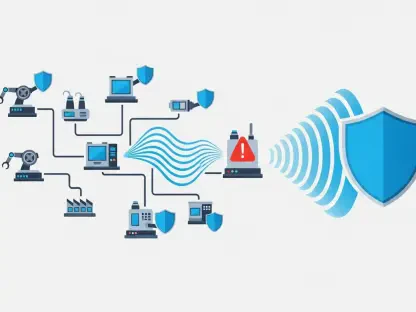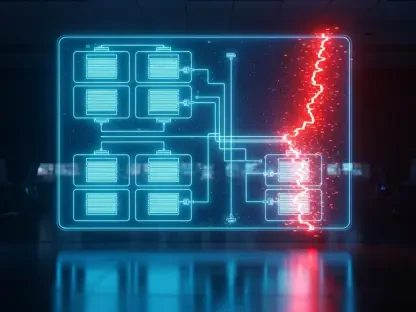A Glimpse into the Factory of Tomorrow
What if the key to unlocking smarter, faster, and more secure factories lay in a single strategic move by a semiconductor giant? Picture a manufacturing floor where machines communicate seamlessly, data is processed instantly at the source, and cyber threats are thwarted before they even strike. This vision is inching closer to reality with NXP Semiconductors’ acquisition of Port GmbH, a German specialist in industrial communication software. This deal, blending cutting-edge hardware with sophisticated protocol expertise, promises to transform the industrial Internet of Things (IoT) landscape, a realm where efficiency and connectivity are paramount.
The stakes couldn’t be higher. With global industrial IoT spending projected to surpass $1 trillion by 2030, according to IoT Analytics, the race to dominate this space is intensifying. NXP, already a titan in industrial and automotive chips, has positioned itself at the forefront of this revolution by integrating Port GmbH’s capabilities. This isn’t just a corporate transaction; it’s a bold step toward redefining how industries harness data in real time.
Why This Move Matters in the Industrial Arena
The significance of NXP’s acquisition extends beyond boardroom dealings—it’s a direct response to the urgent needs of modern manufacturing. Industrial IoT, the backbone of Industry 4.0, demands systems that can handle vast data streams with minimal latency while bridging the gap between outdated machinery and cutting-edge tech. The challenge of fragmented communication protocols has long plagued factory floors, often leading to costly downtime. By acquiring Port GmbH, NXP tackles this head-on, merging specialized software with robust hardware to create solutions that could save industries billions in operational inefficiencies.
Moreover, this deal spotlights the growing importance of edge computing—processing data where it’s generated rather than relying on distant cloud servers. As factories evolve into interconnected hubs, the ability to make split-second decisions at the edge becomes a competitive advantage. NXP’s strategic play with Port GmbH signals a shift toward integrated, secure, and agile systems that could set a new standard for industrial automation.
The Strategic Powerhouse Behind NXP’s Latest Acquisition
Delving deeper, NXP’s integration of Port GmbH brings a wealth of technical prowess to the table. Port’s expertise in industrial protocols such as PROFINET, EtherCAT, and Modbus, coupled with support for advanced standards like Time-Sensitive Networking (TSN), enhances NXP’s chip offerings, including the i.MX RT1180 microcontrollers. This synergy allows manufacturers to connect legacy equipment with modern systems seamlessly, eliminating the need for cumbersome external modules and reducing integration headaches.
Beyond connectivity, the acquisition strengthens NXP’s edge computing capabilities. With Port’s software embedded in its processors, real-time data analysis on the factory floor becomes a reality, cutting dependence on cloud solutions that often introduce delays. Additionally, cybersecurity—a critical concern as industrial systems become prime targets for attacks—is fortified through Port’s secure communication stacks paired with NXP’s hardware-level protections. This layered approach ensures data integrity from the ground up.
NXP’s broader vision also comes into focus with this move. Recent acquisitions, such as Kinara for edge AI and TTTech Auto for safety systems, reveal a clear ambition to provide end-to-end solutions. Port’s middleware, like the GOAL platform, complements this strategy by offering adaptable frameworks that cater to diverse industrial needs, positioning NXP as a one-stop shop for full-stack innovation.
Industry Voices Weigh In on the Game-Changing Deal
Insights from industry leaders shed light on the broader implications of this acquisition. Anand Taparia, principal analyst at IoT Analytics, describes the edge as “the battleground for industrial IoT,” emphasizing that chipmakers like NXP are seizing control of initial data connectivity by embedding protocols directly into silicon. This shift challenges standalone software providers, as seen in the struggles of companies like Kepware, which face obsolescence in a market favoring integrated solutions.
From within NXP, Jeff Steinheider, vice president for industrial edge processing, hails the acquisition as a “perfect complement” to existing strengths, promising faster and smarter systems for clients. Echoing this sentiment, Christian Bornschein, chief marketing officer at Port GmbH, highlights the potential to simplify complex integrations while maintaining high performance. These perspectives underscore a unified view: the merger addresses real-world pain points like protocol fragmentation and latency, paving the way for more resilient industrial ecosystems.
The consensus among experts points to a transformative trend. As manufacturing becomes increasingly data-driven, the ability to process information at the source—coupled with robust security—becomes non-negotiable. This acquisition not only elevates NXP’s standing but also sets a benchmark for competitors striving to meet the evolving demands of Industry 4.0.
Real-World Impacts for Industrial Stakeholders
For manufacturers and tech developers navigating the complexities of industrial IoT, NXP’s strengthened portfolio offers tangible benefits. Adopting processors with embedded Port software can streamline multi-protocol environments, significantly cutting development timelines and costs associated with custom connectivity solutions. This approach proves especially valuable in plants where equipment spans decades of technological advancement.
Focusing on edge processing emerges as another critical takeaway. By leveraging NXP’s enhanced chips, businesses can prioritize real-time analytics directly on production lines, boosting responsiveness and minimizing operational hiccups. Starting with pilot projects on high-priority systems allows for scalable implementation without overwhelming existing workflows.
Cybersecurity also demands attention in this context. Utilizing platforms designed with security at their core helps safeguard sensitive industrial data against escalating threats. Assessing current vulnerabilities and aligning with hardware that prioritizes protection ensures a proactive stance. Meanwhile, maintaining flexibility with multi-protocol support addresses the ongoing mix of legacy and modern standards, enabling compatibility across varied machinery setups.
Reflecting on a Milestone for Industrial Innovation
Looking back, NXP Semiconductors’ acquisition of Port GmbH stood as a pivotal moment in the evolution of industrial IoT. It marked a decisive push toward integrating hardware and software, addressing long-standing challenges of connectivity and security on factory floors. The collaboration brought forth solutions that empowered manufacturers to navigate the complexities of Industry 4.0 with newfound efficiency.
Moving forward, stakeholders should consider exploring NXP’s expanded offerings to modernize operations, focusing on edge-driven systems for immediate impact. Prioritizing pilot initiatives in critical areas can lay the groundwork for broader transformation. Additionally, staying informed about emerging standards and security protocols will be essential to maintain a competitive edge. This strategic merger not only reshaped NXP’s trajectory but also offered a blueprint for how innovation at the edge could redefine manufacturing for years to come.
